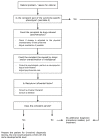What Every Internist-Endocrinologist Should Know about Rare Genetic Syndromes in Order to Prevent Needless Diagnostics, Missed Diagnoses and Medical Complications: Five Years of 'Internal Medicine for Rare Genetic Syndromes'
- PMID: 34830739
- PMCID: PMC8622899
- DOI: 10.3390/jcm10225457
What Every Internist-Endocrinologist Should Know about Rare Genetic Syndromes in Order to Prevent Needless Diagnostics, Missed Diagnoses and Medical Complications: Five Years of 'Internal Medicine for Rare Genetic Syndromes'
Abstract
Patients with complex rare genetic syndromes (CRGS) have combined medical problems affecting multiple organ systems. Pediatric multidisciplinary (MD) care has improved life expectancy, however, transfer to internal medicine is hindered by the lack of adequate MD care for adults. We have launched an MD outpatient clinic providing syndrome-specific care for adults with CRGS, which, to our knowledge, is the first one worldwide in the field of internal medicine. Between 2015 and 2020, we have treated 720 adults with over 60 syndromes. Eighty-nine percent of the syndromes were associated with endocrine problems. We describe case series of missed diagnoses and patients who had undergone extensive diagnostic testing for symptoms that could actually be explained by their syndrome. Based on our experiences and review of the literature, we provide an algorithm for the clinical approach of health problems in CRGS adults. We conclude that missed diagnoses and needless invasive tests seem common in CRGS adults. Due to the increased life expectancy, an increasing number of patients with CRGS will transfer to adult endocrinology. Internist-endocrinologists (in training) should be aware of their special needs and medical pitfalls of CRGS will help prevent the burden of unnecessary diagnostics and under- and overtreatment.
Keywords: intellectual disability; internal medicine; medical overuse; missed diagnosis; multidisciplinary care; syndrome.
Conflict of interest statement
The authors declare no conflict of interest.
Figures








References
-
- Sarneel M.C., Penning C., Roukema J., Moll H.A., Bindels-de Heus G.C.B., Evenhuis H.M. Inventory of frequency and reasons of visits of children with profound intellectual and multiple disabilities to a university hospital. Ned. Tijdschr. Voor Kindergeneeskd. 2005;73:32–33.
LinkOut - more resources
Full Text Sources

